It’s kind of frustrating, but both of my dogs, Kitsune the papillon and Fenrir the Alaskan Klee Kai, have been exposed to the canine papillomavirus, aka warts. Kitsune, my sweet social butterfly, I believe was exposed by one of his dog friends back when we still lived in the city. It was pretty inevitable, after that, that he exposed his dog brother Fenrir too. Luckily doggy warts have never been a huge deal for either of my dogs. Recently Fenrir developed very small warts, one on his chin and one on his eyelid. I did a bit of research about what, if anything, to do about it. After discussing the situation with Fen’s vet, I decided to try a holistic treatment that is touted as being able to get rid of dog warts, thuja.
Post Contents:
- 1 First Thing First, Dogs Can Get Warts!?
- 2 How Do Dogs Get Warts?
- 3 Do You Have to Get Dog Warts Removed?
- 4 Natural Dog Warts Remedies – What is Thuja?
- 5 Using Homeopathic Thuja to Treat Warts
- 6 I Tried Homeopathic Thuja on my Own Dogs Warts
- 7 Did the Homeopathic Thuja Remove my Dogs Warts?
- 8 Does Thuja Ever Work?
- 9 Of course a sample size of one dog does not a scientific study make!
First Thing First, Dogs Can Get Warts!?
It turns out that yes, dogs can get warts. Warts in dogs are caused by the canine papillomavirus. While very similar to the virus that causes warts in humans, the canine papillomavirus is dog-specific and cannot infect humans. The canine papillomavirus is, as the name suggests, a virus that causes growths, often referred to as warts, in dogs by causing a dog’s cells to divide abnormally. Dogs exposed to the canine papillomavirus most commonly develop cauliflower-like growths around their mouths and gums, lips, noses, paws, and eyes. However, warts can sometimes develop in other spots too. When my Kitsune first got one, for example, it was on his back.
How Do Dogs Get Warts?
Dogs must be exposed to the canine papillomavirus to develop warts. Basically, warts are contagious between dogs. A dog can become infected with the papillomavirus by playing with another dog who has warts, or by sharing items such as bowls and toys. Not all dogs who are exposed to the virus will develop warts, or develop warts right away. Dogs may carry the virus asymptomatically. Actual warts appear most often on dogs who have weakened immune systems. They are more commonly found on puppies, senior dogs, or dogs who are immunocompromised in some way.
Do You Have to Get Dog Warts Removed?
Sometimes. In a normal, healthy dog, warts will usually resolve on their own. Your dog’s own immune system can, eventually, learn to recognize the papillomavirus as an invader and develop an immune response against it. This typically takes anywhere between 2 and 6 months. Unfortunately, some dogs will have more persistent warts that don’t go away on their own.
Warts that don’t resolve on their own, especially ones that are large or bothersome to your dog, can be removed either surgically or with cryotherapy. Treating warts this way, unfortunately, does not guarantee that the wart won’t come back. The antibiotic Azithromycin has some anti-viral properties and is sometimes used to treat warts in humans. It has shown positive results in treating dogs as well.
Natural Dog Warts Remedies – What is Thuja?
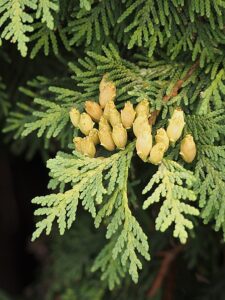
Thuja occidentalis Photo thanks to Agnieszka Kwiecień, Nova. Licensed via the Creative Commons Attribution-Share Alike 4.0 International license.
Thuja occidentalis, thuja for short, is an evergreen tree that grows natively throughout eastern Canada and the northeastern US. Common names for thuja trees include northern white-cedar, easter white-cedar, arborvitae, and swamp cedar. It’s a medium-sized tree in the cypress family that has red-brown bark and scaley leaves. It’s Latin name means “tree of life”, because the sap, bark, and branches are thought to have medicinal properties. Traditionally, herbal remedies created from the tree were used to treat conditions such as scurvy, and skin issues such as thrush, ringworm and, yes, warts.
It’s very important to note that in it’s unaltered form, Thuja occidentalis is actually toxic to both dogs and people! In some people it can cause skin irritation, and dogs who ingest the plant itself can experience GI upset. Do not think that, because homeopathic thuja is often recommended to treat warts, that you can just find thuja growing outside and feed it to your dog! Homeopathic thuja is diluted to the point that actual thuja is no longer detectable. You can read more about how homeopathic remedies are created here.

Using Homeopathic Thuja to Treat Warts
Homeopathic remedies derived from the thuja tree can be purchased to battle warts. Hey, there’s even some evidence that it works for curing warts in cows. Why not dogs? The instructions for using Thuja Occidentalis 30C for people is to dissolve 5 pellets under the tongue up to 3 times a day. Recommendations on what dosages to use for dogs vary. While researching, I came across recommendations to use anywhere from 3 to 10 pellets, once or twice per day. Homeopathic thuja has no known side effects, and no known drug interactions.
In humans, homeopathic pellets are supposed to be held under the tongue until they dissolve. That doesn’t exactly work for dogs. For dogs, the thuja pellets can be placed directly into your dog’s mouth, or dissolved in water. For both humans and dogs, I’ve read statements that suggest it can take anywhere from a week to a few months to see the results of using homeopathic thuja to remove warts.
I Tried Homeopathic Thuja on my Own Dogs Warts
Around May of last year (2022) I first noticed that my Alaskan Klee Kai, Fenrir, had a few very small warts. The first one that I noticed was on his lower lip/chin area. A few days later I noticed a second, very small wart on his right eyelid. The one on his eyelid was so small I wasn’t able to get a picture clearly showing it. His warts appearing seemed to coincide very closely with a bad bout of pancreatitis that he also experienced in May of 2022. I believe his illness, plus the stress of visiting the vet, weakened his immune system.
I consulted with his vet to determine that they were, in fact, warts. This is important to do, as there are some skin issues and types of tumors that can sometimes be mistaken for warts. Luckily Fen’s warts were very small, and not bothering him. His vet expressed some concern that if the one on his eyelid grew too big we’d probably have to discuss removing it. But, as they were, his vet and I both felt comfortable taking a ‘wait and see’ approach.
I discussed trying homeopathic thuja and my vet gave the go-ahead to try it. She didn’t seem overly confident that it would work, but told me that it wouldn’t hurt Fen to try. We decided to start Fen off on 3 Thuja Occidentalis 30C pellets per day. Fenrir is trained to take liquids from a syringe, so I dissolved his pellets in a bit of water and gave it to him with an oral syringe.
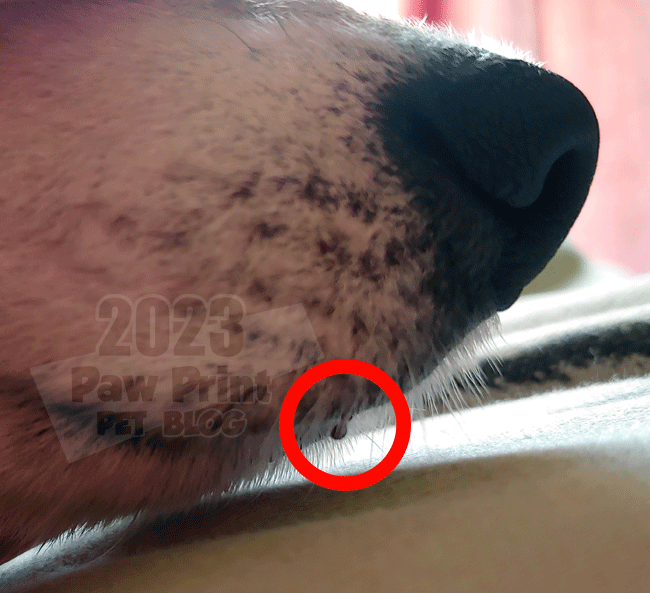
Did the Homeopathic Thuja Remove my Dogs Warts?
I bought a 3 pack of Thuja Occidentalis 30C pellets, enough to last around a month and a half on the 3 pellet a day dosage. Fen did fine taking the pellets. They didn’t cause any ill effects. However, they didn’t do anything for his warts either. Bummer. After finishing the full three pack of Thuja Occidentalis 30C pellets Fen’s warts hadn’t grown any, but they didn’t shrink or go away either. I decided not to continue giving him the thuja and went back to pretty much just monitoring his warts.
It’s now February, around 9 months since I first noticed Fen’s warts. They never grew any bigger than they were when I first discovered them, and last week when I was grooming Fen I noticed that the wart on his lip/chin area was gone. The one on his eyelid is still there, but looks a bit smaller than it was before. I believe that that one’s days are numbered as well. I stopped giving Fen the thuja around 6 to 7 months ago now, so I don’t think it had anything to do with his warts sudden disappearance. I’m pretty sure that his own immune system was just, finally, able to fight them off on it’s own.
Does Thuja Ever Work?
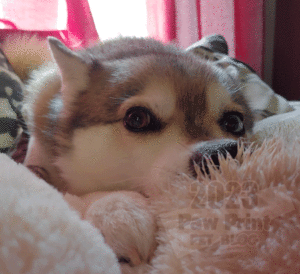 My own experience with thuja leads me to wonder how often owners think that thuja is working at getting rid of their dog’s warts, but in reality it’s just their own immune systems kicking in. Who knows? A lot of people seem to have good luck using thuja to eliminate warts on themselves and their pets. I wish it had worked for us. Part of me wonders if I should have maybe tried increasing Fen’s dosage. Maybe it would have worked better if I gave him more pellets? Or dosed him twice a day instead of just once. Or continued the treatment for longer? But I’ll never know now. At the end of the day I’m honestly just happy that his warts are finally going away. Even though it wasn’t the thuja that made that happen.
My own experience with thuja leads me to wonder how often owners think that thuja is working at getting rid of their dog’s warts, but in reality it’s just their own immune systems kicking in. Who knows? A lot of people seem to have good luck using thuja to eliminate warts on themselves and their pets. I wish it had worked for us. Part of me wonders if I should have maybe tried increasing Fen’s dosage. Maybe it would have worked better if I gave him more pellets? Or dosed him twice a day instead of just once. Or continued the treatment for longer? But I’ll never know now. At the end of the day I’m honestly just happy that his warts are finally going away. Even though it wasn’t the thuja that made that happen.
I was worried that the wart near Fenrir’s eye would grow and irritate him. Then I most likely would have had to have it surgically removed. Thankfully that didn’t happen! Going forward I’m going to work on boosting both of my dog’s immune systems. Hopefully we don’t have to deal with warts again anytime soon. If we ever do have to deal with them again, I wouldn’t necessarily be against trying thuja again to see if we get a different result. Maybe it would work for Kitsune, even though it didn’t seem to work for Fen.
Of course a sample size of one dog does not a scientific study make!
If you’re interested in trying out thuja for your own dog I’d 100% say discuss it with your vet. Just because it didn’t work for my dog doesn’t necessarily mean it won’t work for yours. I’d love to hear from other owners if anyone reading this has also tried using thuja to cure dog warts before. What dosage did you use? Did it work for your dog? If so, how long did it take before you noticed an improvement?
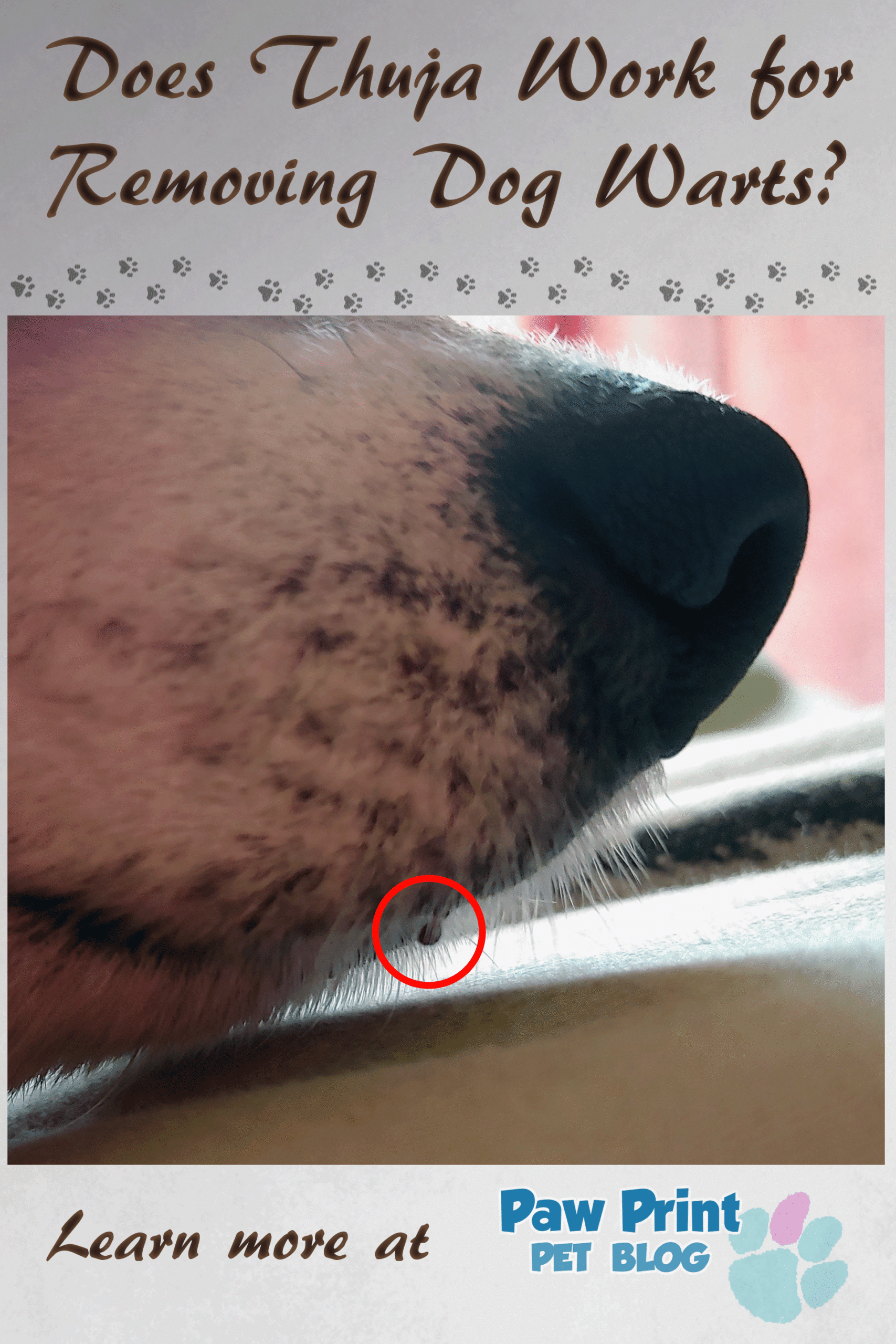


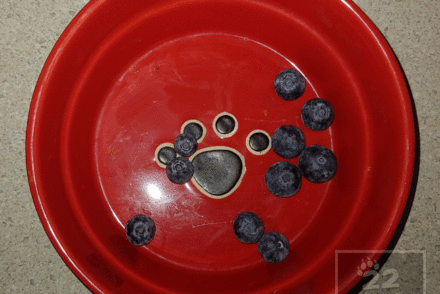
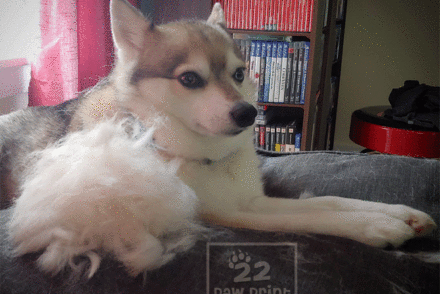
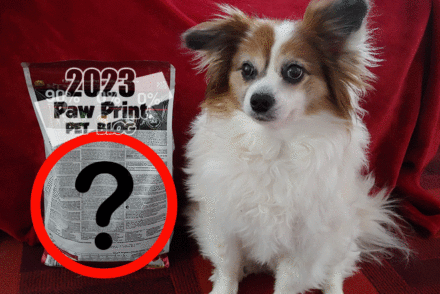

No Comments